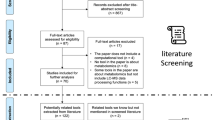Abstract
Reproducibility is a cornerstone of the scientific method, essential for validation of results by independent laboratories and the sine qua non of scientific progress. A key step toward reproducibility of biomolecular NMR studies was the establishment of public data repositories (PDB and BMRB). Nevertheless, bio-NMR studies routinely fall short of the requirement for reproducibility that all the data needed to reproduce the results are published. A key limitation is that considerable metadata goes unpublished, notably manual interventions that are typically applied during the assignment of multidimensional NMR spectra. A general solution to this problem has been elusive, in part because of the wide range of approaches and software packages employed in the analysis of protein NMR spectra. Here we describe an approach for capturing missing metadata during the assignment of protein NMR spectra that can be generalized to arbitrary workflows, different software packages, other biomolecules, or other stages of data analysis in bio-NMR. We also present extensions to the NMR-STAR data dictionary that enable machine archival and retrieval of the “missing” metadata.



Similar content being viewed by others
References
Bahrami A et al (2009) Probabilistic interaction network of evidence algorithm and its application to complete labeling of peak lists from protein NMR spectroscopy. PLoS Comput Biol 5(3):e1000307
Bartels C et al (1995) The program XEASY for computer-supported NMR spectral analysis of biological macromolecules. J Biomol NMR 6(1):1–10
Bax A, Clore GM, Gronenborn AM (1990) 1H 1H correlation via isotropic mixing of 13C magnetization, a new three-dimensional approach for assigning 1H and 13C spectra of 13C-enriched proteins. J Magn Reson 88:425–431
Buckheit JB, Donoho DL (1995) Wavelab and reproducible research. Springer, New York
Collins FS, Tabek LA (2014) NIH plans to enhance reproducibility. Nature 505:612–613
Dall’Olio GM, Bertranpetit J, Laayouni H (2010) The annotation and the usage of scientific databases could be improved with public issue tracker software. Database 2010:baq035
Eclipse IDE (2007) The Eclipse Foundation. www.eclipse.org
Goddard TD, Kneller DG (2004) SPARKY 3. University of California, San Francisco, p 15
Grzesiek S, Bax A (1992) An efficient experiment for sequential backbone assignment of medium-sized isotopically enriched proteins. J Magn Reson 99(1):201–207
Grzesiek S, Bax A (1993) Amino acid type determination in the sequential assignment procedure of uniformly 13C/15N-enriched proteins. J Biomol NMR 3(2):185–204
Grzesiek S, Anglister J, Bax A (1993) Correlation of backbone amide and aliphatic side-chain resonances in 13C 15N-enriched proteins by isotropic mixing of 13C magnetization. J Magn Reson Ser B 101(1):114–119
Guerry P, Herrmann T (2011) Advances in automated NMR protein structure determination. Q Rev Biophys 44(03):257–309
Güntert P (2004) Automated NMR structure calculation with CYANA. In: Downing AK (ed) Methods in Molecular Biology, vol. 278: Protein NMR techniques. Humana Press, Totowa, pp 353–378
Güntert P (2009) Automated structure determination from NMR spectra. Eur Biophys J 38(2):129–143
Ioannidis JPA et al (2008) Repeatability of published microarray gene expression analyses. Nat Genet 41(2):149–155
Johnson BA (2004) Using NMRView to visualize and analyze the NMR spectra of macromolecules. In: Downing AK (ed) Methods in Molecular Biology, vol. 278: Protein NMR techniques. Humana Press, Totowa, pp 313–352
Kay LE et al (1990) Three-dimensional triple-resonance NMR spectroscopy of isotopically enriched proteins. J Magn Reson 89(3):496–514
Keller RLJ (2004) Optimizing the process of nuclear magnetic resonance spectrum analysis and computer aided resonance assignment. Diss ETH No. 15947. Diss. Swiss Federal Institute of Technology, Zurich
Landis SC et al (2012) A call for transparent reporting to optimize the predictive value of preclinical research. Nature 490(7419):187–191
Loeliger J, McCullough M (2012) Version control with Git: powerful tools and techniques for collaborative software development. O’Reilly Media Inc, Sebastopol
Marion D et al (1989) Three-dimensional heteronuclear NMR of nitrogen-15 labeled proteins. J Am Chem Soc 111(4):1515–1517
Montelione GT, Lyons BA, Emerson SD, Tashiro M (1992) An efficient triple resonance experiment using carbon-13 isotropic mixing for determining sequence-specific resonance assignments of isotopically enriched proteins. J Am Chem Soc 114(27):10974–10975
Open Source Initiative (2006) The MIT License. http://opensource.org/licenses/MIT
Peng RD (2011) Reproducible research in computational science. Science 334(6060):1226
Prinz F, Schlange T, Asadullah K (2011) Believe it or not: how much can we rely on published data on potential drug targets? Nat Rev Drug Discov 10(9):712
Rowland NMR Toolkit Script Generator. Web. September 18, 2014. http://sbtools.uchc.edu/nmr/nmr_toolkit/
Shen Y et al (2009) TALOS+: a hybrid method for predicting protein backbone torsion angles from NMR chemical shifts. J Biomol NMR 44(4):213–223
Stodden V, Miguez S (2014) Best practices for computational science: software infrastructure and environments for reproducible and extensible research. J Open Res Softw 2(1):1–6. doi:10.5334/jors.ay
Ulrich EL et al (2008) BioMagResBank. Nucleic Acids Res 36(suppl 1):D402–D408
Vranken WF et al (2005) The CCPN data model for NMR spectroscopy: development of a software pipeline. Proteins 59(4):687–696
Williamson MP, Craven CJ (2009) Automated protein structure calculation from NMR data. J Biomol NMR 43(3):131–143
Zimmerman DE et al (1997) Automated analysis of protein NMR assignments using methods from artificial intelligence. J Mol Biol 269(4):592–610
Zuiderweg ERP, Fesik SW (1989) Heteronuclear three-dimensional NMR spectroscopy of the inflammatory protein C5a. Biochemistry 28(6):2387–2391
Acknowledgments
This research was funded by United States National Institutes of Health Grant GM-083072. The authors would like to thank Dr. Mark Maciejewski for kindly providing time-domain data of the Samp3 protein and Dr. Woonghee Lee for adding the reproducibility extensions to the NMRFam release of Sparky.
Conflict of interest
The authors declare that they have no conflict of interest.
Author information
Authors and Affiliations
Corresponding author
Electronic supplementary material
Below is the link to the electronic supplementary material.
Rights and permissions
About this article
Cite this article
Fenwick, M., Hoch, J.C., Ulrich, E. et al. CONNJUR R: an annotation strategy for fostering reproducibility in bio-NMR—protein spectral assignment. J Biomol NMR 63, 141–150 (2015). https://doi.org/10.1007/s10858-015-9964-1
Received:
Accepted:
Published:
Issue Date:
DOI: https://doi.org/10.1007/s10858-015-9964-1




